-
Notifications
You must be signed in to change notification settings - Fork 4
mesoSPIM_history
The mesoSPIM project started as a tiny side project for Fabian Voigt when the lab of Adriano Aguzzi (Neuropathology, University Hospital Zurich) approached Fritjof Helmchen (Laboratory of Neural Circuit Dynamics, Brain Research Institute, Zurich) with a request for help in the selection of a light-sheet microscope for CLARITY-cleared mouse brains. Initial tests with a LaVision Ultramicroscope I revealed that the field-of-view was good, but sample exchange and imaging quality were lacking with such samples. Somehow, we came up with the idea to set up a "classical" SPIM with a horizontal detection arm.
The first mesoSPIM prototype (first light: October 2015) was mostly assembled from left-over parts from single- and two-photon microscopes in the Helmchen lab. It was built on a shoestring budget and had the following specifications:
- Olympus MVX-10 macroscope with a MVPLAPO2x objective (inspired by the Lavision Ultramicroscope I)
- Hamamatsu Orca Flash V2 camera (taken from a widefield setup)
- manual filter exchange
- cylindrical lens to form the light-sheet
- single-sided illumination
- Luigs & Neumann micromanipulators for sample XY movement (left-over electrophysiology stages)
- Steinmayer Feinmess Z & focus stage (left-over stages from old two-photon microscopes)
- Image acquistion controlled by Scope (custom 2P software) and HCImage
- 488 nm/514 nm Argon/Krypton Laser + 632 nm Helium Neon laser (left-over lasers from an old confocal microscope)
- uses kinematic mounts with magnets & cuvettes (inspired by the COLM instrument)
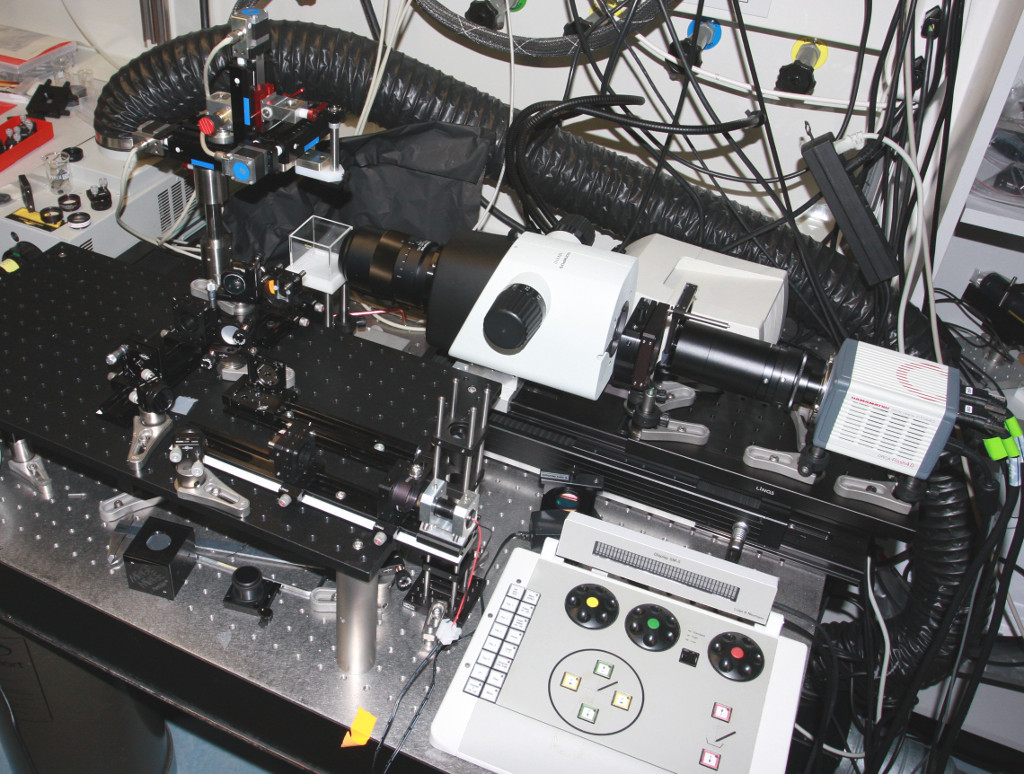
It quickly became apparent that generating a light-sheet with a cylindrical lens lead to extreme shadowing artifacts. Therefore, the shadow reduction technique of the Ultramicroscope I (scanning a high-NA Gaussian beam to both generate the light-sheet and reduce shadows) was adopted. This lead to the first mesoSPIM that was used to test acquiring scientific data (First light: November 2015). It had the following improvements:
- uses 10 mm Galvo scanners for light-sheet generation (left-over scanners from a 2P microscope project)
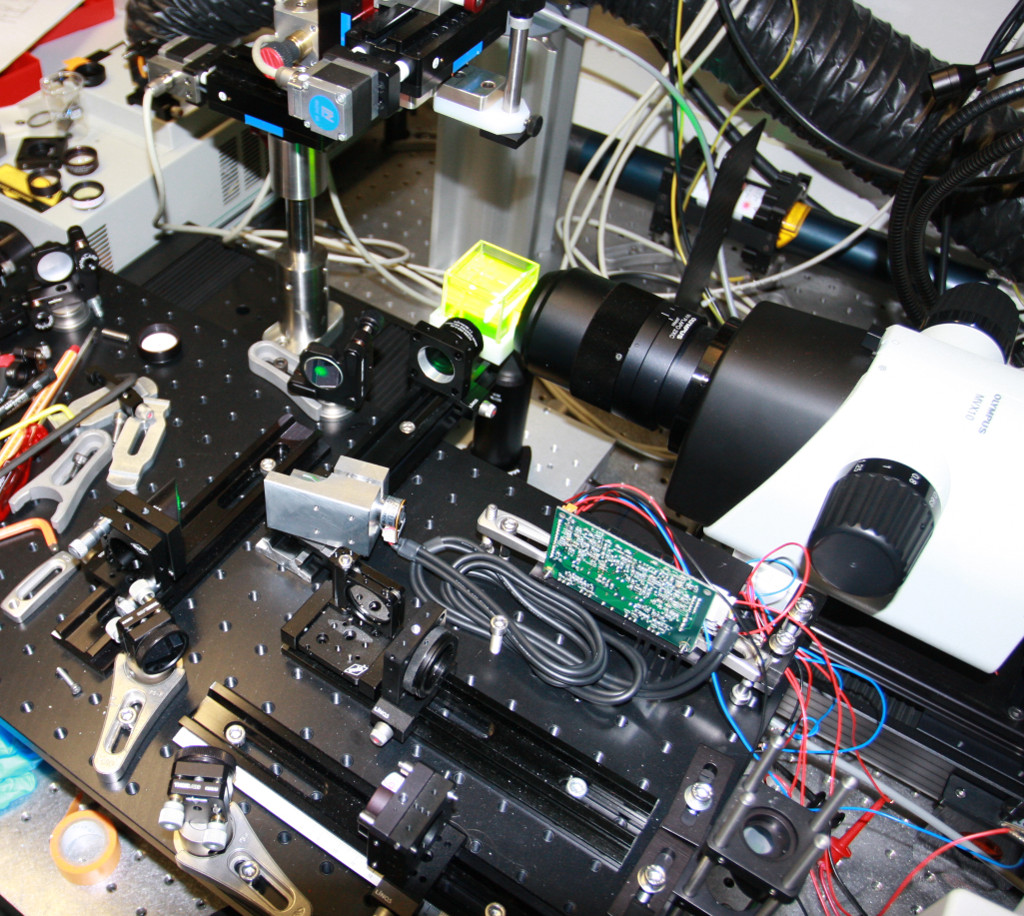
In early 2016, the mesoSPIM prototype was moved to a different lab and onto a bigger optical table. There, enough space was available to add a second excitation path for dual-sided illumination. Other improvements included:
- 2x objective replaced by MVPLAPO 1x which lead to larger FOV and less distortion
- lasers replaced by an Omicron Sole 6 laser engine with 405, 488, 561, 640 nm lines
- added a Ludl filter wheel (acquired on Ebay) for motorized filter exchange
- controlled via Labview, Micromanager, Image acquisition via HC Image
- a stereomicroscope could be added for visual inspection of the sample
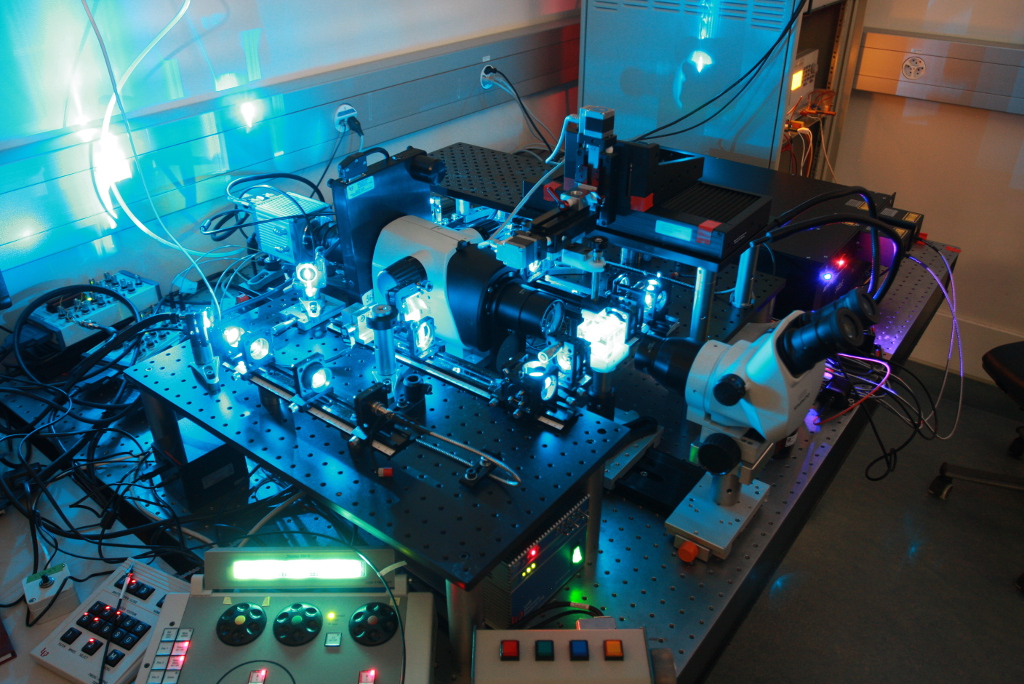
The main shortcoming of the mesoSPIM V2 was the non-uniform axial resolution across the FOV which complicated image analysis. To overcome this issue, it was decided to turn the mesoSPIM into a axially-scanned-lightsheet microscope (ASLM) by translating the Gaussian beam waist with an electrically tunable lens. By synchronizing the rolling shutter of the Hamamatsu Orca Flash 4.0 with the moving waist, only the axially most confined part of the light-sheet is used to create an image. This leads to an optical section of uniform thickness across the FOV. This mesoSPIM version saw first light in April 2017 and had the following improvements:
- increased FOV (to 20 mm) of the microscope by redesigned excitation path
- better shadow reduction by higher excitation NA (0.15 instead of 0.1)
- this necessitated 15 mm galvos for generating the light-sheet
- used 50 mm DSLR lenses as scan lenses to create a light-sheet waist without image curvature
- added a Thorlabs rotation stage for sample rotation
- controlled via Labview, Micromanager, camera control via HCImage
This mesoSPIM version was the first one to be copied to a different institution: In July 2017, a second mesoSPIM V3 was set up in the Aguzzi lab in the University Hospital Zurich. From mid-2017 on, mesoSPIM development turned from a side-project into a full-time project.

In late 2017, the Wyss Center Geneva decided to build a mesoSPIM to augment its existing COLM instrument for low-magnification overview scans of cleared samples. We took this opportunity to unify the mechanical stages (at this point, both existing mesoSPIMs contained stages from 3 different manufacturers - Luigs & Neumann, Steinmayer Mechatronik and Thorlabs) by adopting the COLM stages from Physik Instrumente (PI). At the same time, the software (up to this point a combination of Labview, Micromanager, and HCImage) was unified in mesoSPIM-control, a Python-based light-sheet software. The first mesoSPIM V4 saw first light in March 2018 in Geneva. The other existing mesoSPIM V3 (HIFO & USZ) were upgraded to this configuration in May 2018.
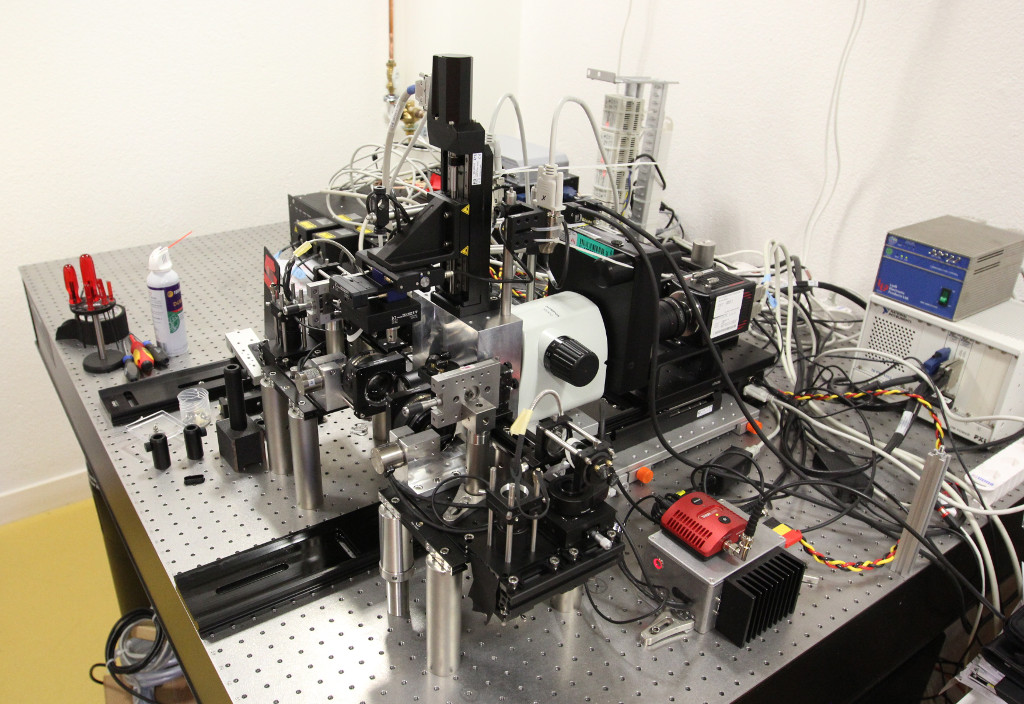 The USZ mesoSPIM after the upgrade to Version 4 in May 2018.
The USZ mesoSPIM after the upgrade to Version 4 in May 2018.
Several mesoSPIM V4 suffer from mechanical artifacts in z-stacks due to the z-stage exhibiting large rolling motion (due to manufacturing tolerances). Therefore, the mesoSPIM V5 was designed to incorporate better stages. In addition, by mounting the stages on a gantry build from X95 aluminium extrusions, the stage configuration is easier to modify and less custom parts have to be made. Currently (Early 2019), the first two mesoSPIM V5 are under construction.
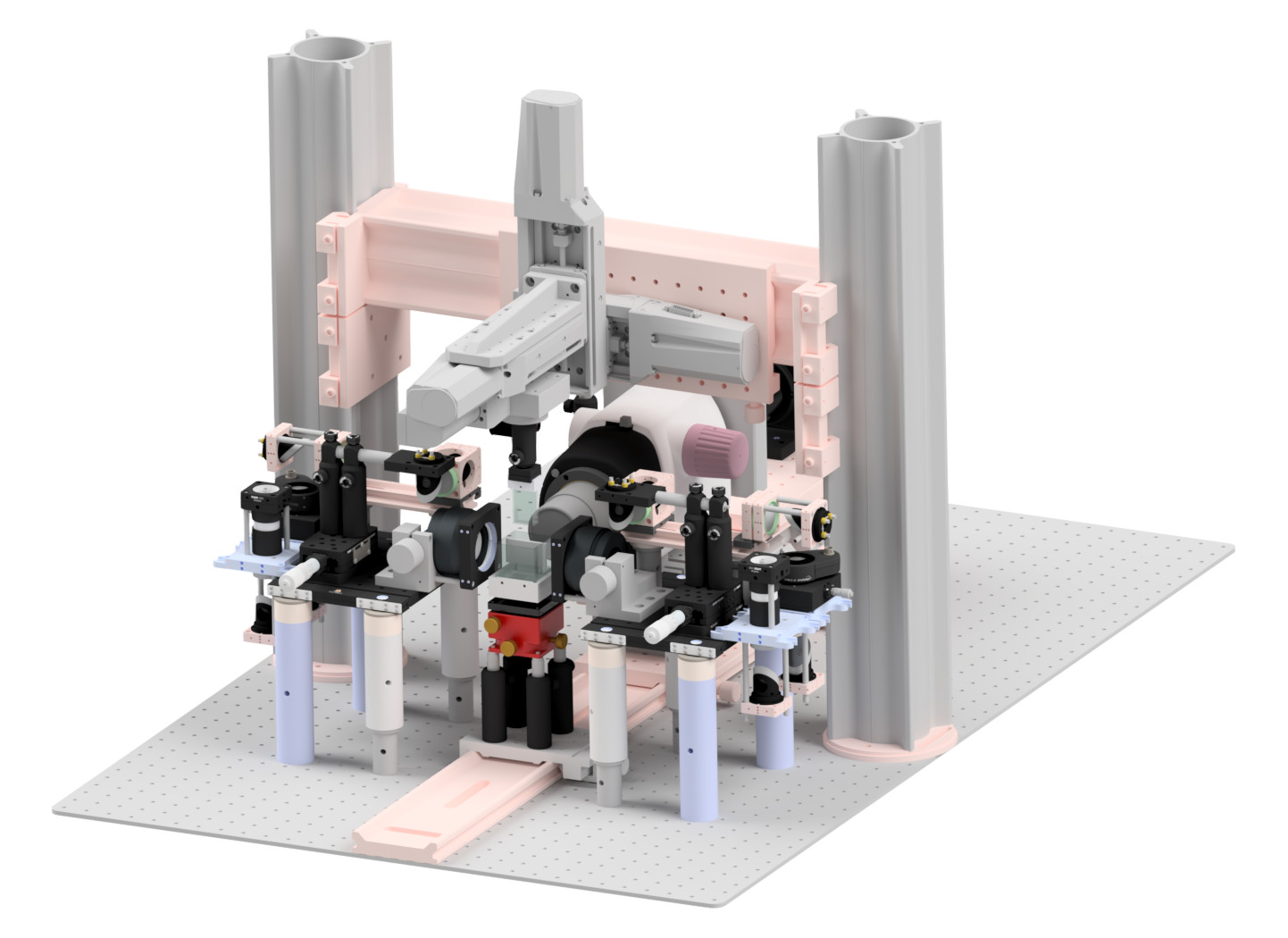
-
Background
- mesoSPIM history
- Optical design
- Electronics
-
Setting up a mesoSPIM
- First steps
- Preparing the software and electronics
- Preparing the microscope optics
-
Setting the microscope up
- General alignment tips and tricks
- Installing the microscope base
- Setting up the detection path
- Alignment of the detection path
- Setup of the sample XYZ stages
- Setup of the excitation path
- Immersion cuvettes
- Set up a microscope config file
- Light-sheet co-alignment
- Set up initial ETL parameters
- Setting up lasers with the GUI
- Sample Handling
- Test Samples
- Troubleshooting
- Upgrades and custom variants